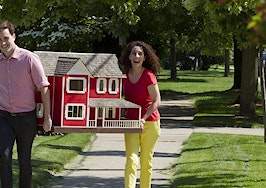- Be human about all real estate transactions.
- Present the positive.
- Look at the financial facts.
There comes a time when you have to re-evaluate your lifestyle. This can be for many reasons, but for most, the primary reason a downsize occurs is need-related.
Americans tend to overpay for things and services. At a certain age, those things stop being important, and lifestyle and health become pivotal factors, especially in the San Francisco market.
I tell other real estate agents to put themselves in the shoes of their aging clients. Ask your client to think about the need for a family home during retirement.
The expense associated with keeping up a pool, a lawn, maintenance on a home, taxes on a home, the liability of simply having a large home and then the associated HOA fees can be thousands of dollars a month.
Is this really something that your client wants to commit to, even as rental property?
Different isn’t always bad
Downsizing isn’t about losing things or services — it is about freedom and independence. This is key information when discussing downsizing options with a potential client who may be, or may not be, ready to sell the family home.
The cost of living a great life or the cost of keeping up a lifestyle that better served you 10 or 20 years ago has to be addressed at some point.
When people think about downsizing to condo living, independent living communities or assisted living communities, they are not “giving up” what they have but rather breaking free of financial burdens associated with things or services that are no longer needed.
Imagine cutting these costs and keeping the cash in the bank. Maybe even using the saved cash to pay for services like laundry, housekeeping and dining? Or private medical management.
Here’s a tip: be human about the transaction. Real estate professionals fail to address the biggest fear a client has, losing the familiar.
As humans, we are scared to lose what we know, and we often fear change, but why? Especially when change can save the clients money and upgrade their lifestyles.
Present the positive
I always tell people that downsizing is actually rightsizing. When it is time to give up the family home and all the bills and liability associated with it, you’re stepping closer into a new-found freedom. You have more options, and you have more cash.
Look at the facts. Let’s say most people pay close to $1,400 a month in home-associated fees. This figure does not include the mortgage, if any. That’s $1,400 a month for insurance, taxes, lawn care, general maintenance and products to keep up a family home.
At over $16,000 annually, think about what hanging onto the family home for an extra 10 years is actually costing you financially — yes, over $160,000 on average.
If you have a client who has hinted that he or she is feeling the large family home that once suited the family’s needs is no longer meeting his or her lifestyle needs and is starting to squeeze them financially, help your client really consider options — not fear them.
Independent living and assisted living communities often make their turnkey living options and one-stop-shopping prices affordable to the point that the downsizing not only makes sense, but it also helps the person obtain more cash on hand once they sell the family home.
And if these lifestyle options aren’t for the client, even downsizing to a condo can create savings as there is less work, less taxes and less liability.
Sam Benson, SRES, is a real estate broker in the greater Walnut Creek, California, area. You can follow him on Instagram and Facebook.












